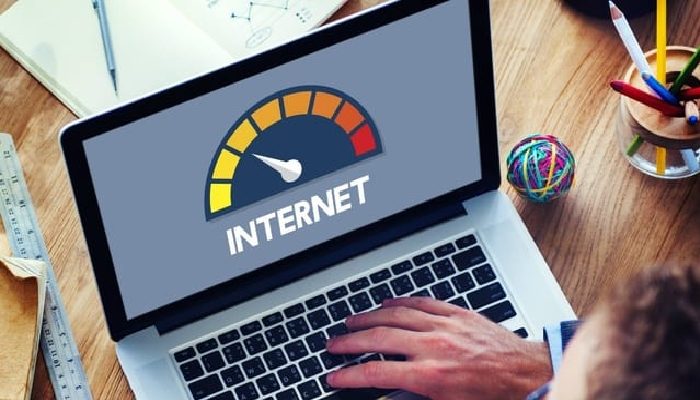If you suspect your internet isn’t as fast as it should be, then it’s time for an internet speed test! They’re quick, easy to do and provide more information than just your speeds. From download speeds to latency and deciphering your test results, there’s some information you need to know. Here’s how to check your internet speeds below, let’s dive in!
Internet Speed Tests
To test your internet speeds, you’ll need a reliable speed test. You can choose one of the third party speed tests below or use your internet provider’s speed test. They’re easy to use and only take a few moments of your time so there’s no excuse not to test your speeds and you should test them often.
- Speedtest By Ookla
- Fast By Netflix
- Your Internet Provider
We recommend doing internet speed tests during different times of the day, pause downloads and ask bandwidth hogs in the home to pause their gaming or streaming. You should also test your internet speeds while being directly plugged into your internet connection instead of Wi-Fi. This way you’ll get a more accurate representation of your internet speeds.
Deciphering Your Test Results
Hooray you’ve completed your test, but what does it all mean? All internet speed tests will test for the same things; download speed, upload speeds, and latency. However, the most important number from the test is your download speed. It’ll determine how fast your internet is, how many connected devices it can handle and ultimately whether or not you’re getting what you pay for.
- Download Speed: This number refers to how fast the information takes to reach you or load onto your screen. For example how long it takes for a website to load. With download speeds, the higher the number, the better.
- Upload Speed: This number refers to how fast the information takes to reach its destination. For example how long it takes to upload a photo to social media. With upload speeds, the higher the number, the better.
- Latency: This number refers to how long it takes for information to be sent from your connected device to its destination and back. For example how long it takes to make a move in your favorite video game. With latency, the lower the number, the better. This number is usually the most important to gamers because online games perform at their best with low latency. High latency makes some online games impossible to play.
Diagnosing Your Slow Speed Problems
So, you’ve completed your internet speed test and your speeds aren’t what you expected. Now you’ll have to diagnose why your internet speeds are so slow. Here are some common issues that cause slower than expected internet speeds:
- Open Wi-Fi Network: If your Wi-Fi network isn’t password protected, you’re leaving it open for everyone to connect. This can quickly attract a whole bunch of problems including overcrowding and malware. The easiest way to solve it is to put a password on your Wi-Fi as soon as possible.
- Internet Provider Problems: There might be a problem on your internet provider’s end. From an outage, on going maintenance, to faulty cables outside and infracture; sometimes your slow speeds can be out of your control. In these cases it would be up to your provider to fix them. There’s not much you can do, but report the issue, follow their directions and be patient.
- Outdated Equipment: If you don’t remember when you purchased or received your equipment, it’s most likely outdated. To make the most of your internet connection, keeping as up to date as possible with what your internet provider supports will deliver the best speeds to your home.
- Malfunctioning Equipment: If you’re finding yourself receiving slower than normal speeds unexpectedly or an intermittent connection, but there are no problems on your internet provider’s end; there may be a problem with your equipment. Unfortunately, this happens. Our equipment isn’t invincible. We recommend going through the troubleshooting process with your internet service provider and see if that fixes the problem.
- Malware On Your Network: If everything else seems to be working properly, you could have malware on your device or on your network. Malware and other types of malicious attacks can take a good portion of your bandwidth along with whatever other harm it’s causing. Run your antivirus software to check and remove any malware. Then schedule a convenient time for you for it to run everyday automatically.
